Text and photos Danielle Lachana
One of the lesser-known Cycladic islands, what Serifos lacks in terms of cosmopolitan night-life it more than makes up for with its natural and scenic beauty. Boasting no fewer than seventy-two beaches, a number of mountain ravines, caves and 15 ''official'' walking trails it is undoubtedly an attractive destination.
There are various versions as to the origin of its name ranging from that of a herb called 'serfi', a small winged insect, 'serphos', a sea-cicada, 'seriphos', or, and more probably, from 'sterphos' and 'steriphos' - meaning 'infertile'. True enough like most of the other Cyclades there is little greenery, but water is never in short supply.
There is no airport on the island so arrival is necessarily by sea - around five hours by boat or two to two and a half hours by high speed ferry, the latter only during the high season.
Arrival is at the port of Livadi, which comes to life in the evening as the tavernas, cafés and bars that line the seafront fill up and often overspill into the street. The port is flanked by two beaches - 'Avlemonas' to the west and a more striking, and organised one, 'Livadakia' 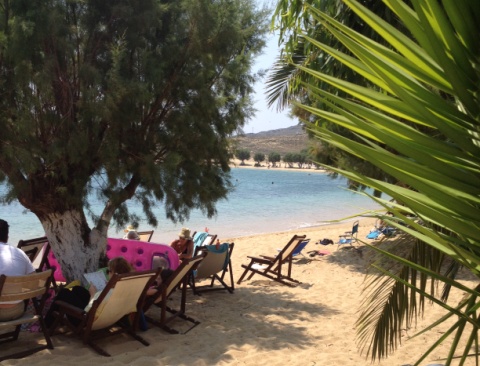
to the east, with its sparkling sands, tamarisks and palm trees for shade, café bar and taverna. At the far end there is an organised campsite and, close by, water-sports.
Do not hesitate however to go a little further afield to discover more of the multitude of beaches that Serifos boasts, many with fine golden sand and crystal-clear waters including the noteworthy Psili Ammos,
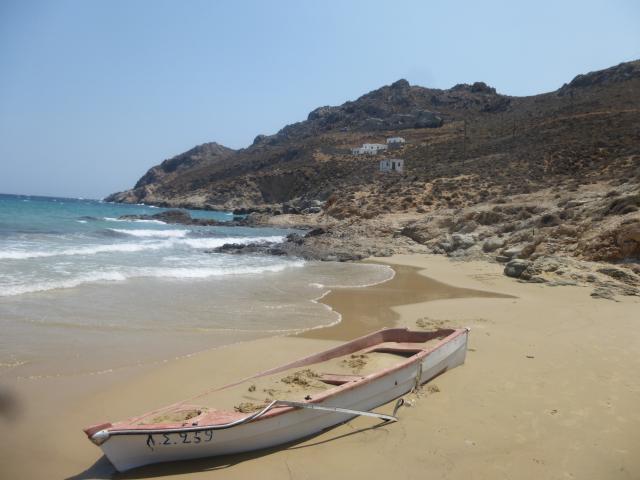
Vagia, Ganema, Koutalas , Platys gialos, Agios Sostis
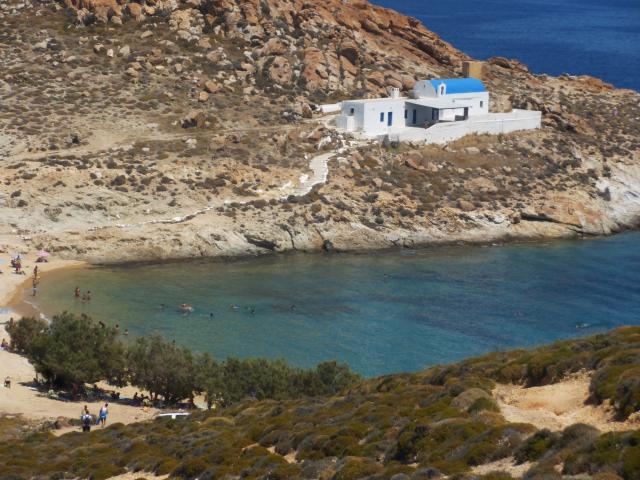
and the more isolated, yet still accessible by road, Sikamia,
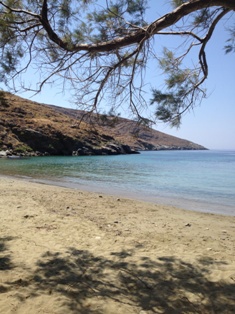
to name just few. A good many others may be reached either by footpath or boat, offering a mixture of sand, pebbles or rock, such as Kalo Ambeli and Lia.
Aside from the port of Livadi, the other main centre of activity on the island is 'Pano Hora' (The Upper Town), which lies atop a hill, at a distance of 5 km by road from Livadi, or around half the distance by a series of good paved footpaths. It is built amphitheatrically up the hill
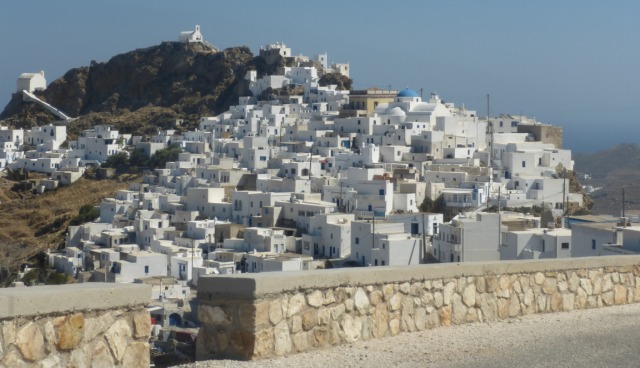
with the typical winding alleys to foil the pirates/invaders of past years and brilliantly white-washed houses, interspersed with bright splashes of vibrant colour from the bougainvilleas
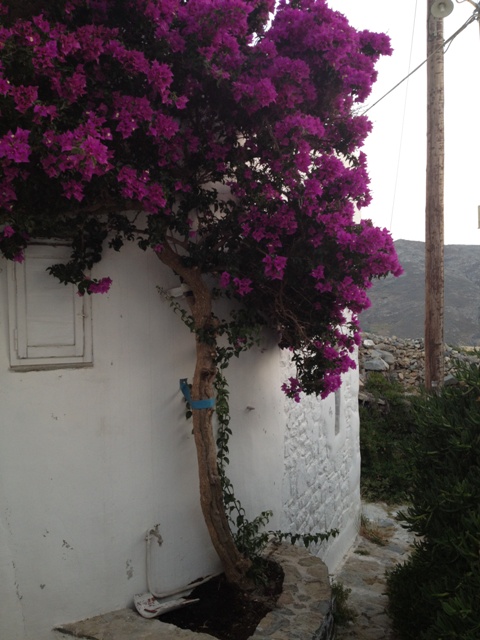
and caper plants,

the latter of which are endemic to the island and whose fragile white flowers somehow manage to withstand the ravages of the wind which often blows on Serifos.
Some steps take you to the central square with its neoclassical town hall

and church of Agios Athanasios. The square is flooded with people in the summer, vying for a seat in the cafés and bars around it but one can escape the crowds by taking more steps up and onwards to arrive at Kastro, which literally means ''castle''. The castle, which dates back to 1296, is today hardly visible since the remnants of the fortress have been incorporated into today's houses and used in the building of the nearby church, Agios Konstantinos, which marks the highest part of the castle. Lack of a castle structure is compensated however by the sweeping views that this spot affords of Serifos and the neighbouring islands
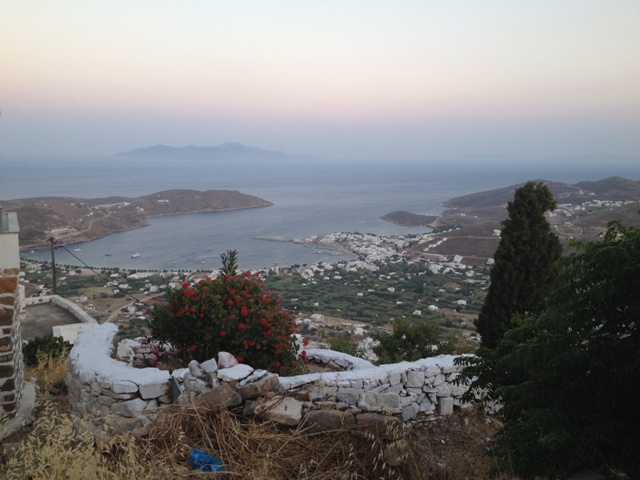
and, if you are lucky, you may even stumble across an impromptu 'concert', a couple of people sitting on a wall playing the violin and guitar and singing traditional Serifian songs. For other unique moments, back down from Kastro in the Pano Hora look out for Kyria Rena, a charming lady who lives in a converted windmill.
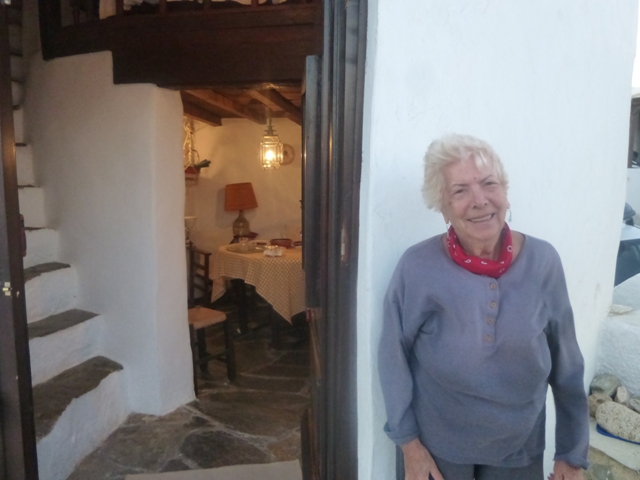
In addition there is also a minute Archaeological Museum with findings from the Classic, Hellenistic and Roman Era of the islands.
Below the upper town lies the 'Kato Hora' (The Lower Town) with a small jewel, the Folklore museum, a couple of rooms refurbished as a traditional Serifian house. The majority of the exhibits were generously provided by the locals and include clothes, ceramics, tools and rocks and minerals, all of which tell of the traditional life of Serifos. Behind the Folklore Museum is a small, open-air theatre, where several cultural and artistic events take place, such as the summer Serifos Music Festival.